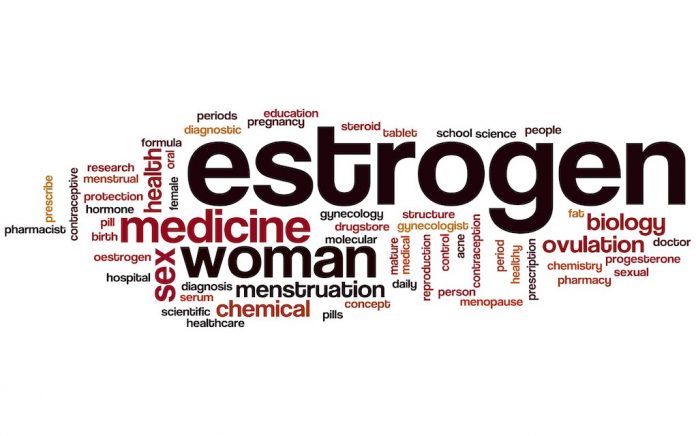
As women age, one of the most common and more challenging changes that occur is the development of low estrogen. The decline in the level of this primarily female hormone and the impact it has on women has been the subject of endless research, stories, myths, and misunderstanding. Although low levels of this hormone is a natural part of a woman’s life, there is still much we don’t know about it. Here is some of what experts do know about the effects of low levels of estrogen as we age.
Causes of low estrogen
By far the most common cause of low levels of estrogen is aging. With advancing age comes perimenopause, which is when estrogen levels begin to drop. Once the ovaries stop producing estrogen, a woman is in menopause.
Read about welcome to perimenopause
Other causes of low estrogen levels can include:
- Thyroid disorders
- Premature ovarian failure, which can develop because of exposure to toxins, an autoimmune condition, or genetics
- Being severely underweight/having anorexia/eating disorders
- Excessive exercise
- Low-functioning pituitary gland
- Chemotherapy
- Family history of hormonal problems
- Turner syndrome and other congenital conditions
- Chronic kidney disease
Symptoms of low estrogen
Low levels of estrogen can result in symptoms throughout the body. For example:
- Weak bones. Declining estrogen can result in bone loss, which also increases the risk of fractures and/or osteoporosis.
- Irregular menstrual cycles. Women with low estrogen may experience irregular periods or skip them.
- Painful intercourse. Your estrogen levels have an impact on your ability to produce vaginal lubrication. Low hormone levels can result in vaginal dryness and painful sex.
- Infertility. Low estrogen can result in a failure to ovulate, which makes it difficult to get pregnant.
- Hot flashes. This is probably the most recognized symptom of low estrogen.
- Increased risk of urinary tract infections. This symptom is believed to be associated with the thinning of the tissue in the urethra, which is the result of low estrogen.
- Mood swings/depression. The mood hormone, serotonin, depends on estrogen, therefore low estrogen can result in a drop in serotonin levels and contribute to depression and mood swings.
Low estrogen and skin
Estrogen plays an important role in supporting skin health. For example, the hormone stimulates the production of collagen and oils for the skin, promotes wound healing, and provides some protection against radiation from the sun.
Therefore, when estrogen levels decline, you may experience skin issues as you become more sensitive to changes in temperature, fabrics, beauty products, and other things that may touch your skin. Such sensitivity can result in rash, itchy or irritated skin, dryness, and flaking, hives, or flushing. Because the skin becomes thinner as estrogen levels fall, you may notice that you bruise more easily than you did in the past.
Read about natural menopause remedies
Low estrogen and weight
Declining estrogen has been associated with weight gain and how much fat the body stores. Generally, women store fat in their hips and thighs. However, once estrogen levels begin to drop, the storage area often shifts to the abdomen.
Just because you have low levels of estrogen doesn’t mean you will automatically gain weight, however. You can reduce your risk of weight gain by exercising regularly, eating a healthy diet, and getting adequate sleep.
Low estrogen and sex
When estrogen levels decline to the point that the uterine lining stops thickening, menopause has arrived. This is often accompanied by vaginal dryness and, for some women, painful intercourse. Any decline in sex drive, however, is usually attributed to low testosterone and not estrogen. Low estrogen also can affect your sleep patterns and mood, both of which can have an impact on sexuality.
Natural remedies
If you want to boost your estrogen levels naturally, nature has a few suggestions. Discuss the best dosage for your needs with a knowledgeable healthcare provider.
- Black cohosh. You may know this herb for its ability to help with menopausal symptoms. Research also suggests this herb contains compounds that stimulate estrogen receptors. More research is needed to verify this finding.
- Chasteberry. This traditional herbal remedy is frequently used for premenstrual symptoms. Experts have found that chasteberry has estrogenic effects when taken at 0.6 and 1.2 g/kg of body weight. A phytoestrogen called apigenin in chasteberry is believed to be responsible for this effect.
- Estrogen-rich foods. Be sure to include flaxseeds in your diet—they are one of the richest sources of phytoestrogen. Other candidates include soy, pistachios, walnuts, strawberries, and dried fruit.
- Evening primrose oil. The omega-6 fatty acids in this herbal remedy make it popular for symptoms associated with menopause. In one study, about 40 percent of women who used evening primrose oil experienced relief of symptoms associated with low estrogen.
- Red clover. The isoflavones (i.e., biochanin A, daidzein, formononetin, genistein) in red clover (Trifolium pratense) may act like estrogen in the body. Some research has shown that taking red clover supplements can significantly increase estrogen levels in menopausal women.
- Vitamin D. This vitamin plays an important role in estrogen production, so you need to be sure to get enough of it. Since vitamin D deficiency is very common, you may want to get a blood test to determine your levels before you take a vitamin D supplement so you know the optimal dose for you.
- DIM. DIM can help bring balance back to the good estrogen and help the body eliminate the bad metabolite byproducts of estrogen.
Bottom line
The presence of low estrogen is a natural part of a woman’s life cycle. Rather than fear it, this life phase can be understood, embraced, and managed.
Sources
De Pietro M. What happens when estrogen levels are low? MedicalNewsToday 2018 Feb 27
Davis SR et al. Understanding weight gain at menopause. Climacteric 2012; 15(5): 419-29
Gangula P et al. Protective cardiovascular and renal actions of vitamin D and estrogen. Frontiers in Bioscience 2013 Jan 1; 5:134-48
Gentry-Maharaj A et al. Use and perceived efficacy of complementary and alternative medicines after discontinuation of hormone therapy: a nested United Kingdom Collaborative Trial of Ovarian Cancer Screening cohort study. Menopause 2015 Apr; 22(4): 384-90
Ghazanfarpour M et al. Effects of red clover on hot flash and circulating hormone concentrations in menopausal women: a systematic review and meta-analysis. Avicenna Journal of Phytomedicine 2015 Nov-Dec; 5(6): 498-511
Leach MJ, Moore V. Black cohosh (Cimicifuga spp) for menopausal symptoms. Cochrane Database Systematic Review 2012 Sep; 2012(9): CD007244
Lockett E. 12 natural ways to boost estrogen in your body. Healthline 2019 Oct 30
Rani A , Sharma A. The genus Vitex: a review. Pharmacognosy Review 2013 Jul-Dec; 7(14): 188-98










